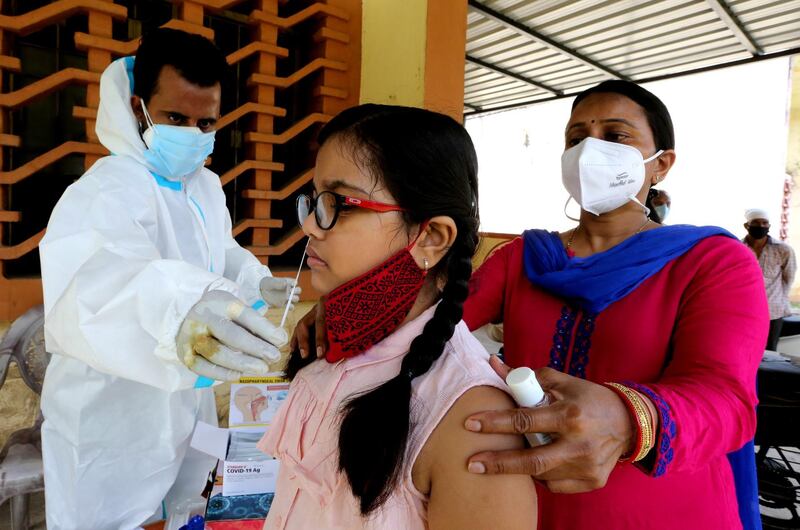When the coronavirus pandemic took the world by storm in early March, India had a handful of daily infections. The country was not an epicentre of the outbreak early on, but it is now.
On Monday, India became the country with the second-highest number of recorded infections in the world. With more than 4.2 million cases, it has surpassed Brazil. On Sunday, India registered a record high of more than 91,000 new infections in a single day.
Even in comparison with other densely populated countries such as the US and Brazil – home to the first and third-highest number of coronavirus cases, respectively – the scale and acceleration of India’s new infections are cause for concern.
The number of India's cases has nearly doubled over August. Nearly half a million new cases were detected in the last week of August alone, pushing the worldwide number of infections up by 1 per cent, according to the World Health Organisation.
Medical experts believe that, in part, India's recorded case numbers have surged as a result of increased testing. Local media has reported that the country is second only to the US in the number of daily screenings, with more than 1m Covid-19 tests carried out each day.
But experts have also blamed the easing of restrictions on public movement for India's rising infections. On Monday metro services resumed in the capital, New Delhi.
While it has spread widely in cities, the coronavirus has not spared rural India. It has reached as far as the remote Andaman islands, where 10 members of a tribe with minimal contact with the outside world tested positive last month.
Villages have little access to health care or Covid-19 testing. Only 25 per cent of rural Indians have access to public outpatient health care, according to a national survey.
India went into lockdown in March, but with the economy contracting by a record 23.9 per cent between April and June, millions of people were left jobless and the government was forced to relax restrictions.
Foreign aid has helped, and the international community should continue to provide support. In May, the UAE sent India seven tonnes of medical aid. India has returned the favour, sending doctors and nurses to the Emirates.
Ultimately, it is only through nationwide initiatives that India will be able to curb the spread of the virus. Solutions will need to prioritise the poor – urban and rural – and other vulnerable groups. They will also need to support the residents of India’s sprawling metropolises by ensuring that public health measures are adhered to meticulously, with a culture of civic duty across all of India’s diverse communities.
India’s fight against Covid-19 will be long and complex. But it is a fight that the nation is more than capable of winning.






